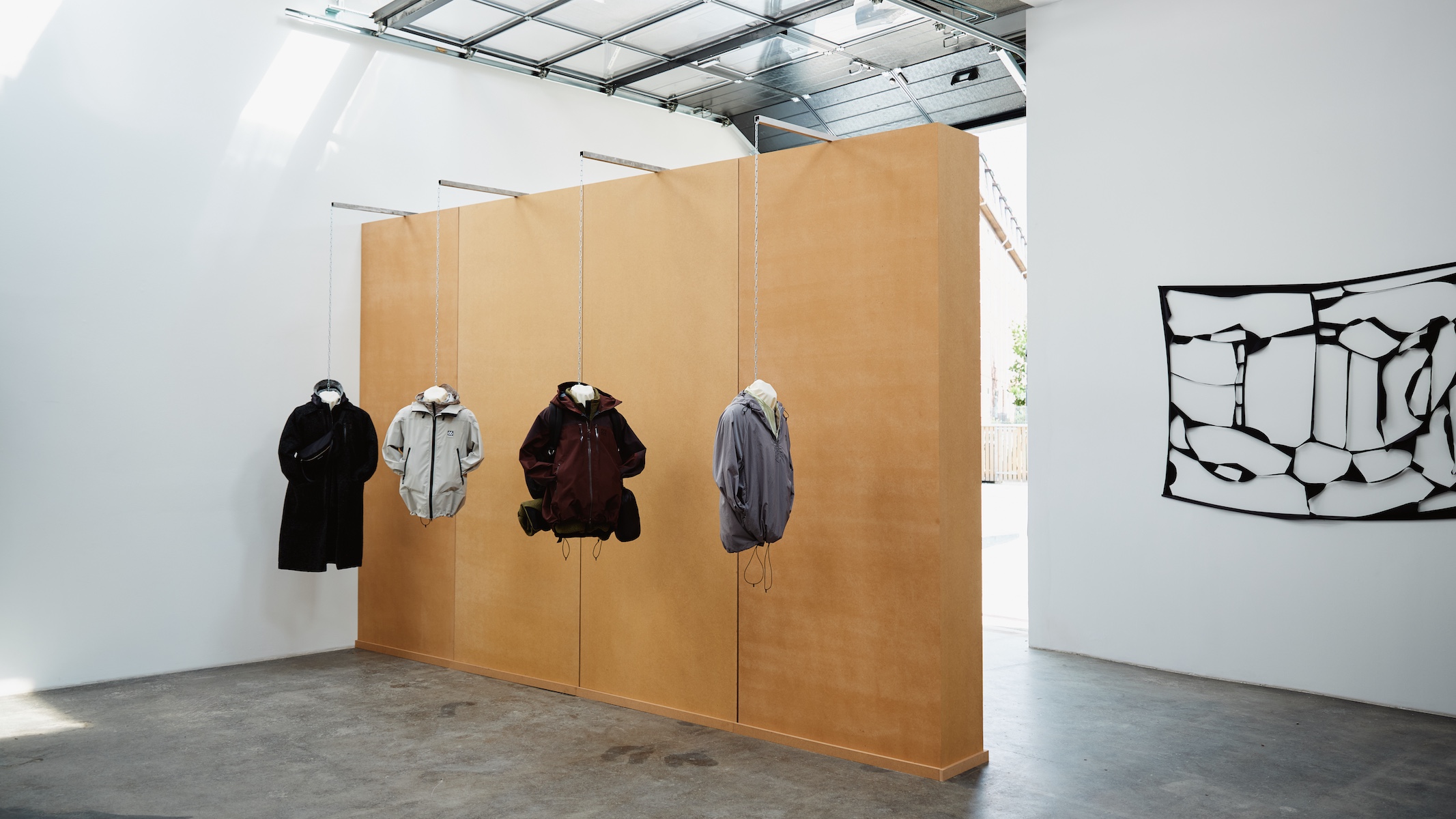The future of Copenhagen Fashion Week? Look towards the students of SAFD
Taught by designer Anne Sofie Madsen, the tightly knit students of the Scandinavian Academy of Fashion Design (SAFD) are adding a new jolt of energy to the city’s manicured fashion scene. Dal Chodha heads to Copenhagen to meet its rising stars
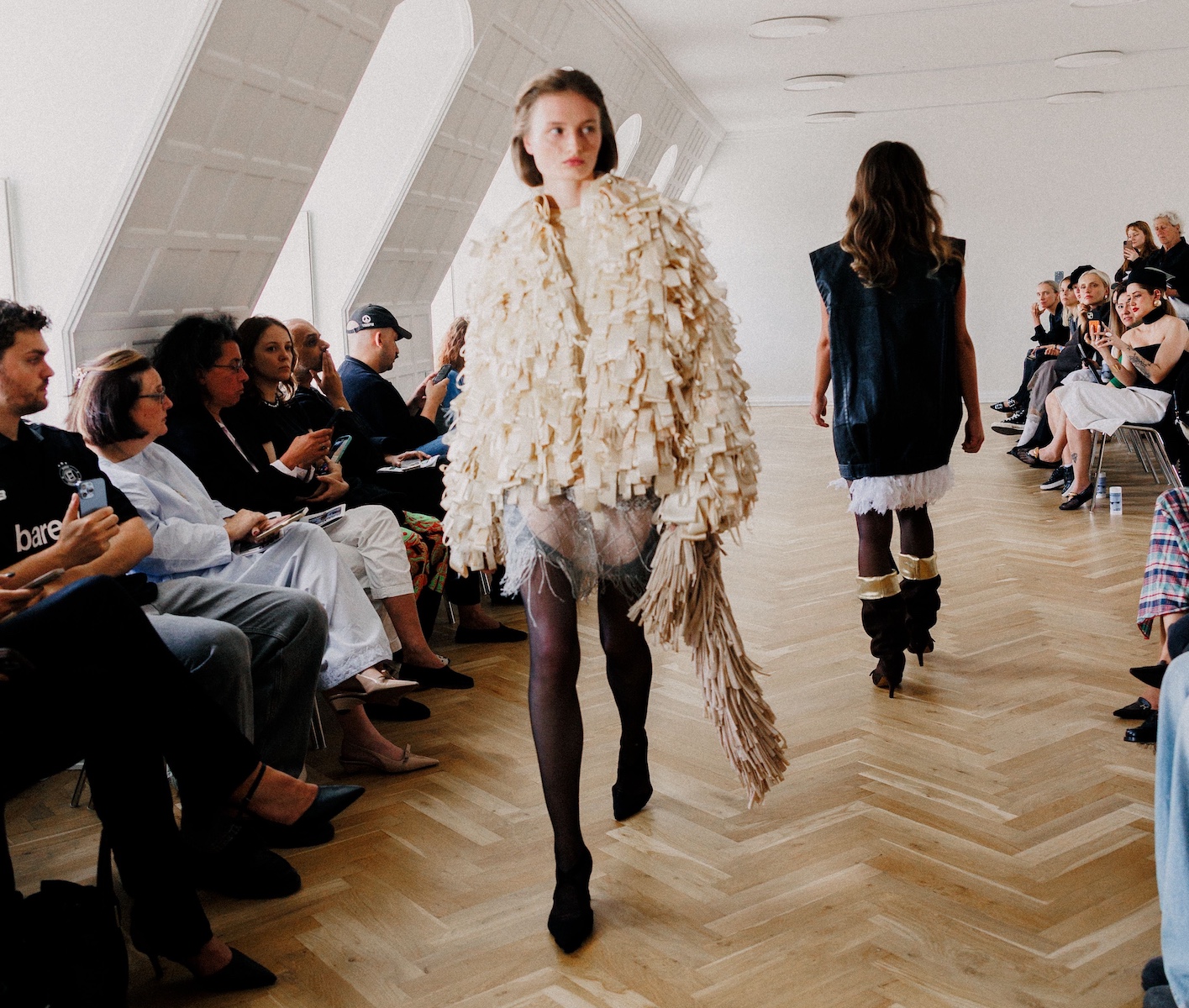
At the S/S 2026 edition of Copenhagen Fashion Week earlier this month – the biggest so far – it was difficult to know where the catwalk ended and the street began. Provocatively, it was a season of clothes that looked good, pleased the seated audiences and didn’t need an esoteric bibliography to explain them. After almost 20 years, the city has established itself as the place for fashion that fits life; fashion without the footnotes.
The week saw the return of one of Denmark’s breakout stars. Anne Sofie Madsen launched her eponymous brand in 2011, showing in Paris for six years before taking a break in 2017, losing herself in the fugue of producing four collections a year. ‘I was just managing things. Always travelling, never really draping or drawing. I lost contact with everything that made me want to become a designer,’ she says. ‘This time I promised myself that I really want to be the person sitting at the sewing machine. I want to do embroideries and fabric manipulation; the physical part of fashion was always what I was really into.’
SAFD: designing the future of Copenhagen Fashion Week
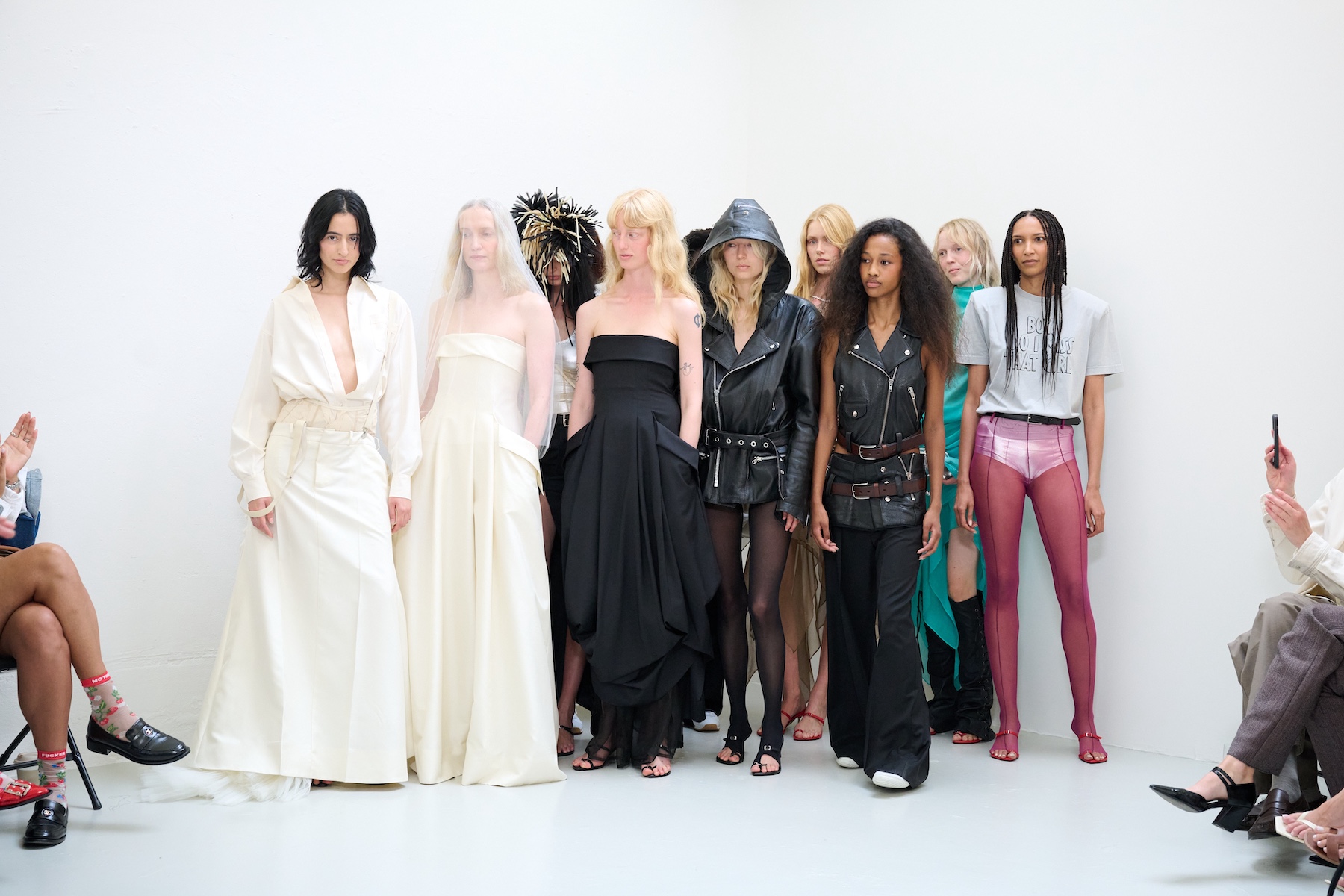
Anne Sofia Madsen’s S/S 2026 collection, which was shown at Copenhagen Fashion Week after an eight-year break. Alongside her label, she teaches final-year students at the Scandinavian Academy of Fashion Design (SAFD)
Madsen hasn’t shown in Copenhagen since 2013. Now she’s back working formally with stylist and casting director Caroline Clante and their collection was filled with a buzzy, off-kilter glamour. Garments coded with old-fashioned meaning were remixed and repositioned. The city’s fashion week now boasts a much bigger schedule, and a much brighter spotlight. ‘I think that maybe this show wouldn’t have happened if I wasn’t working with Caroline. This was her first collection, and a return for me. And we had a blast,’ Madsen says two weeks after the show.
Alongside running her label, Madsen has been teaching for more than a decade, first at the Royal Danish Academy, and more recently at the Scandinavian Academy of Fashion Design (SAFD), where she works with final-year students. In operation since 1931, SAFD offers only one course – a full-time three-year BA in fashion design, delivered by four members of staff – and accepts only 30 students per year. The campus is located inside a typical Copenhagen apartment building on top of a Lego store on Badstuestræde – an area known for having one of the longest pedestrian shopping streets in Europe.
‘You do wonder how you can add something new to this scene, something exciting that isn’t just what you’d see someone wearing on the street’
Clara Maria Kreisberg, a recent SAFD graduate
‘It’s funny because if you’re on the street, you have no idea what’s happening in the rooms above you – we’re at our little desks, working on our projects,’ recent graduate Clara Maria Kreisberg says. ‘As a student it honestly feels so strange in Copenhagen. You do wonder how you can add something new to this scene, something exciting that isn’t just what you’d see someone wearing on the street,’ she adds. ‘Anne Sofie and the school encourage us to be a bit more over the top, a bit more wild.’
Two looks from Kreisberg’s collection were shown during the week as part of SAFD’s graduate show, which was organised entirely by the students themselves. Her project was based on the Norway-born Hollywood starlet and ballet dancer Vera Zorina. Kreisberg focused on making extremely glamorous and expensive clothes that had a worn-in, worn-out reality. Imagine an enormous jacket that’s painfully well-made with layers upon layers of tainted ribbons.
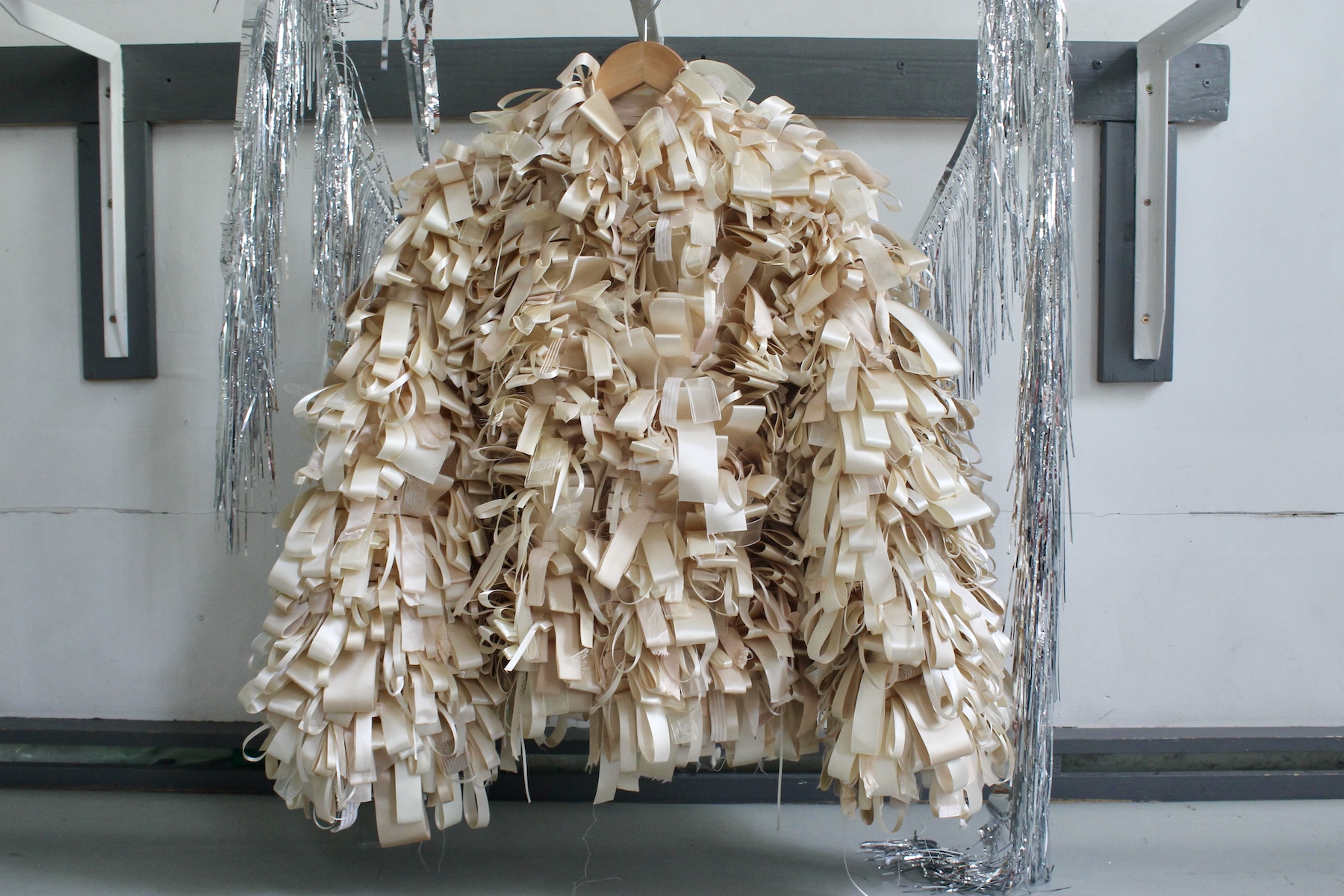
A ribbon jacket by recent SAFD graduate Clara Maria Kreisberg
As a matter of pride, SAFD focuses on construction and pattern making – the hard skills – for the first two years of study. ‘That can sometimes put a bit of a damper on your ambitions because you have three days to make something yourself, so, how crazy can you go! But towards the end we were motivated to make something new and fun and exciting because otherwise why even bother?’ Kreisberg says.
Receive our daily digest of inspiration, escapism and design stories from around the world direct to your inbox.
Madsen – by all accounts – is a tough but nurturing tutor. Ambitious for each of the students, eager to untangle their full potential. ‘I often think of fashion as a kind of silly aunt to all the other creative fields,’ she says. ‘What I really enjoy about teaching is we’re always questioning everything together: what are we doing, and why are we here? Being in a world that is very ugly at times, it’s very important to have discussions about whether beauty can have a kind of activist potential.’
‘What I really enjoy about teaching is we’re always questioning everything together: what are we doing, and why are we here?’
Anne Sofie Madsen
Teaching is a very giving occupation. Madsen says that what she enjoys is the sense that she’s involved in the production of something intangible; not just the clothes the students show at the end of the three years but their way of moving and thinking through the world.
The staging of Madsen’s own show – conceived by the founders of Issueissue magazine, Freja Wewer and William Becker – took inspiration from Sofia Coppola’s cult short Lick the Star. To evoke the film’s hazy unfurling of early girlhood, the models circled a taxonomy of physical objects laid onto the floor: a well-worn E.T. movie T-shirt, a cloudy snow globe with a green snake inside, a decorative candle stick holder, three empty plastic bottles, a copy of Movie magazine from September 1962 with Otto Preminger on its cover, a 1991 paperback edition of Ronnie Spector’s biography, a portrait of Tristan Tzara, a used ash tray, a lacquered striped shirt, a bejewelled rat and giant costume diamonds. It was a riposte to the ease of AI-sullied scrolling and screenshotting, which dominates research across the creative industries today.

A look by Anine Hundsbaek Lykke Smed, who wanted to challenge body ideals with her graduate collection
‘Anne Sofie always says that our dictionary is photos,’ Alberte Hundsbæk Lykke Smed says. Another graduate from this year, her collection focused on the unique position she found herself in studying alongside her twin sister, Anine. ‘Of course, you cannot escape being a twin; we are two different individuals but part of a unit.’ Alberte’s collection looked at redefining pairs and exploding ideas of multiples. One of her dresses was a top with a bra that had three cups rather than the conventional two.
With Madsen she found a way to translate her research – a series of collages of New York office workers by Hans Eijkelboom, and Petra Collins’ 2019 book Why Be You When You Can Be Me? – across every part of her decision-making. ‘She [Anne Sofie] can be hard on us. She’s a dictionary herself; she always has an idea if you need that one last thing. What she really did was help the clothes speak for themselves,’ Lykke Smed says. ‘You’re pushing 200 or more sketches and you need help to narrow it down. I’m still reaching out to her for advice on what to do next.’ Anine is also figuring out what’s next. Her project aimed to challenge body ideals, with padded donuts added to the hips and around the waist.
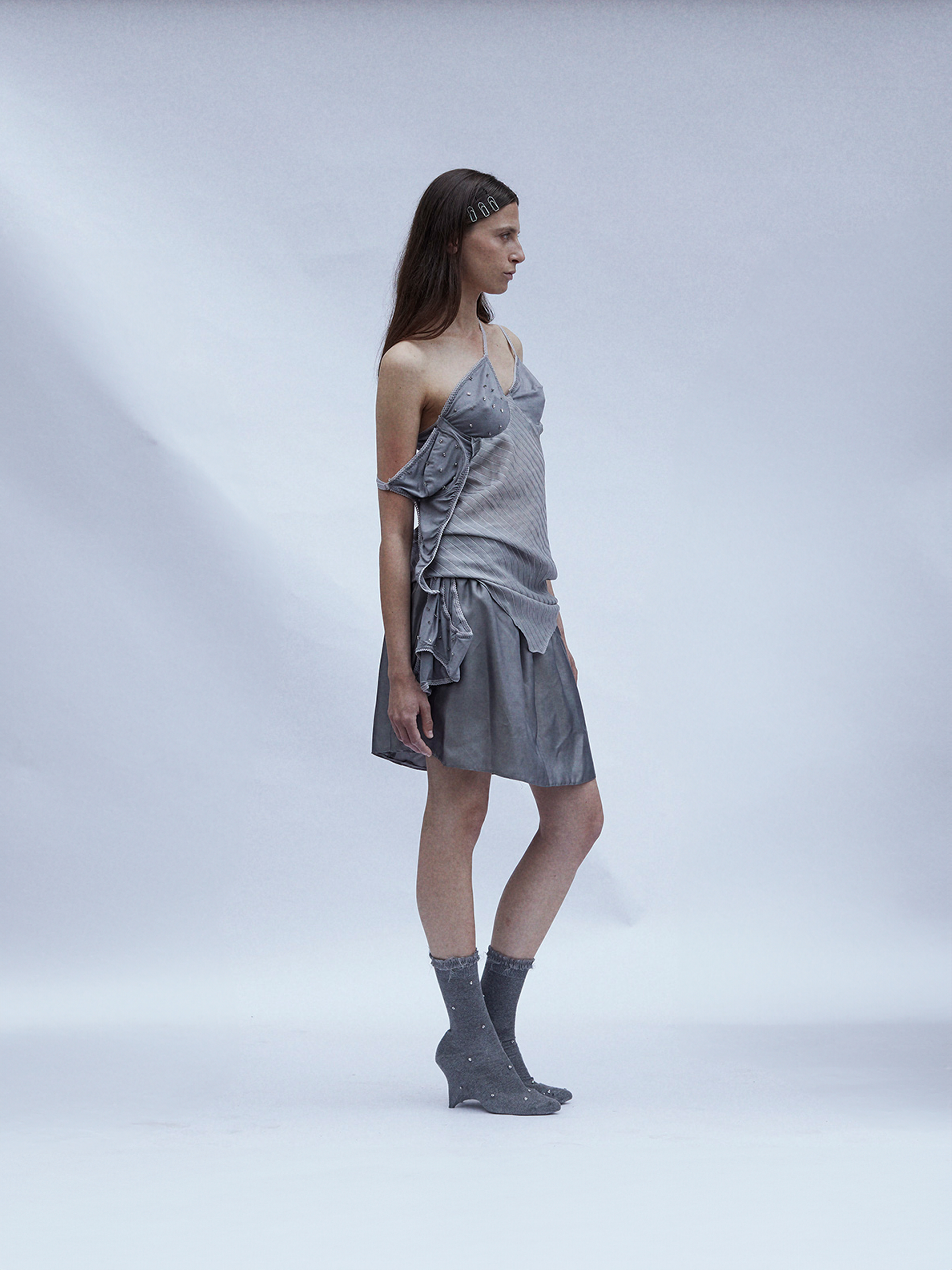
The collection of Anine’s twin sister Alberte Hundsbaek Lykke Smed looked at redefining pairs and exploding ideas of multiples
Madsen’s own collection was a much-needed jolt of pizazz within the scope of everything else shown during the week. ‘I really liked how some of the pieces were a bit deconstructed, but then you have the bling, the chains,’ Anine says. ‘I thought it was a bit 1980s with the blue tights, and then with the rat bag – that’s playful! That’s bringing art into fashion, which is something the industry is lacking right now. Anne Sofie did something that was unexpected.’
With its edited looks, rustled-up pointy shoes and the models’ urgent stride, the SAFD show had a wily freshness to it. Directed by stylist Maya Soul Paustian, it was deliciously crafty. Out of step with what was happening at street level below. Against the backdrop of a city famed for its manicured, mesmerising togetherness, it was even a little punk. Madsen says: ‘Some young people I meet have lost belief in the values of the Western world – which sounds like a very big thing to say, but the conversations we’ve had have really moved me. With respect to what’s happening around the world, I’ve been both devastated and disappointed. I’m not an optimistic person, but I am an idealistic one. More and more, I think the important thing for me to do is to encourage the students towards idealism. No matter what their goals are.’
London based writer Dal Chodha is editor-in-chief of Archivist Addendum — a publishing project that explores the gap between fashion editorial and academe. He writes for various international titles and journals on fashion, art and culture and is a contributing editor at Wallpaper*. Chodha has been working in academic institutions for more than a decade and is Stage 1 Leader of the BA Fashion Communication and Promotion course at Central Saint Martins. In 2020 he published his first book SHOW NOTES, an original hybrid of journalism, poetry and provocation.
-
 Find solace in the forest at this expansive treehouse retreat in Dorset
Find solace in the forest at this expansive treehouse retreat in DorsetFor sale for the first time, a treehouse, Mallinson’s Woodland Retreat, is a tribute to the skill of designer and master craftsman Guy Mallinson
-
 All hail the compact new Renault Twingo E-Tech – the city car is back in style
All hail the compact new Renault Twingo E-Tech – the city car is back in styleRenault continues to pay homage to its heritage by combining it with 21st-century technology. The new Twingo E-Tech is another winner
-
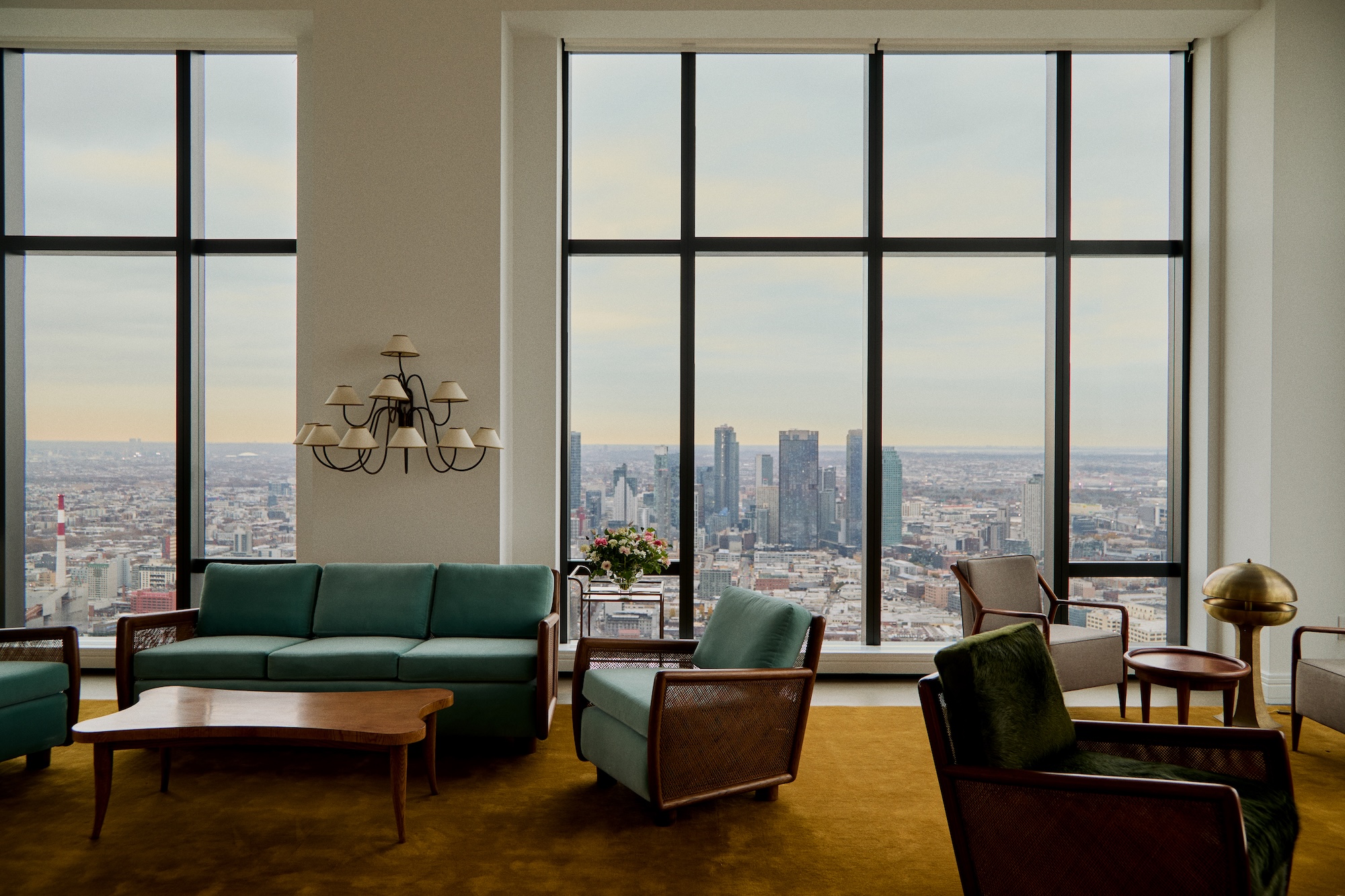 A breathtaking exhibition celebrating modernism’s transatlantic ties soars above Manhattan
A breathtaking exhibition celebrating modernism’s transatlantic ties soars above ManhattanCurated by interior designer Andre Mellone, 'Crossed Trajectories' at Galerie Gabriel's penthouse explores connections between nomadic post-war creatives Jean Royère, Roberto Platé and more
